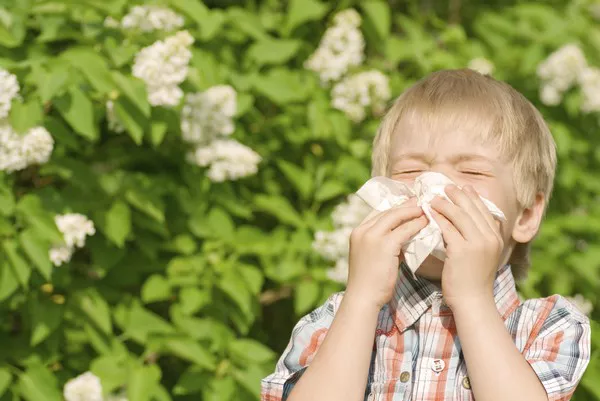Hay fever, medically known as allergic rhinitis, is a common allergic condition that affects millions of individuals worldwide. While pollen from various sources can contribute to hay fever symptoms, certain trees stand out as primary culprits. In this comprehensive exploration, we delve into the trees that often provoke hay fever and the specific allergens responsible for triggering allergic reactions. Understanding these nuances can empower individuals to navigate their environments more consciously and manage hay fever symptoms effectively.
The Nature of Hay Fever:
Hay fever manifests as an allergic reaction to airborne allergens, commonly pollen particles released into the air by trees, grasses, and weeds. For individuals with hay fever, exposure to these allergens triggers a range of symptoms, including sneezing, nasal congestion, itchy eyes, and throat irritation. While multiple factors contribute to hay fever, the role of tree pollen, especially during specific seasons, is significant.
Common Trees Linked to Hay Fever:
1. Oak Trees:
Oak trees, known for their majestic presence and widespread distribution, are prominent contributors to hay fever. The pollen from oak trees can trigger allergic reactions, and its abundance during the spring season makes it a key player in seasonal allergies.
2. Birch Trees:
Birch trees are notorious for releasing large amounts of pollen that can instigate hay fever symptoms. These trees are prevalent in temperate climates, and their pollen is particularly potent during the spring months.
3. Pine Trees:
While pine trees are known for their year-round greenery, they also produce pollen that can contribute to hay fever. Pine pollen is typically released in large quantities during the spring, adding to the seasonal challenges for hay fever sufferers.
4. Maple Trees:
Maple trees, recognized for their distinctive leaves and sap production, can also be hay fever culprits. The pollen from maple trees can trigger allergic reactions, with peak levels typically observed during the spring.
5. Cedar Trees:
Cedar trees, common in various regions, release pollen that can exacerbate hay fever symptoms. Cedar pollen is prevalent during specific seasons, depending on the tree species and geographic location.
6. Ash Trees:
Ash trees, found in both urban and rural landscapes, contribute to hay fever with their pollen. The release of ash tree pollen is most pronounced during the spring, aligning with peak hay fever seasons.
7. Elm Trees:
Elm trees, known for their distinctive serrated leaves, release pollen that can be problematic for individuals with hay fever. Elm pollen is prevalent in the spring and can contribute to allergic reactions.
Understanding Tree Pollen Allergens:
The allergic reactions experienced during hay fever are primarily triggered by specific proteins present in tree pollen. These proteins, known as allergens, can prompt the immune system to release histamines, leading to the characteristic symptoms of hay fever. Different tree species produce distinct allergens, contributing to the diversity of hay fever triggers.
1. Bet v 1 Allergen (Birch Trees):
Birch trees, a common hay fever culprit, produce the Bet v 1 allergen. Exposure to Bet v 1 can result in allergic reactions in susceptible individuals, contributing to the prevalence of birch pollen allergies.
2. Ole e 1 Allergen (Olive Trees):
Olive trees, while not as common as some deciduous trees, can also induce hay fever symptoms. The Ole e 1 allergen from olive tree pollen can elicit allergic responses in sensitive individuals.
3. Cup a 1 Allergen (Cypress Trees):
Cypress trees, found in various regions, release pollen containing the Cup a 1 allergen. This allergen can contribute to allergic reactions, especially during seasons when cypress pollen is abundant.
4. Aln g 1 Allergen (Alder Trees):
Alder trees, prevalent in temperate climates, produce the Aln g 1 allergen. Exposure to alder pollen, rich in Aln g 1, can lead to hay fever symptoms in susceptible individuals.
5. Jun a 1 Allergen (Juniper Trees):
Juniper trees, belonging to the cypress family, produce the Jun a 1 allergen. Individuals sensitive to juniper pollen may experience hay fever symptoms triggered by exposure to this allergen.
Strategies for Hay Fever Management:
1. Pollen Count Monitoring:
Keeping track of local pollen counts, especially during peak seasons for specific trees, allows individuals to anticipate potential hay fever triggers. Various weather websites and apps provide real-time pollen count information.
2. Allergen Avoidance:
When tree pollen levels are high, taking measures to minimize exposure can be beneficial. This includes keeping windows closed, using air purifiers, and avoiding outdoor activities during peak pollen times.
3. Medication:
Over-the-counter or prescription antihistamines can help alleviate hay fever symptoms by blocking the effects of histamines released during allergic reactions. Nasal corticosteroids and decongestants are also options for managing symptoms.
4. Immunotherapy:
For individuals with severe hay fever, allergen immunotherapy, commonly known as allergy shots, may be recommended. This involves gradually exposing the individual to increasing amounts of allergens to build tolerance over time.
5. Consultation with Healthcare Professionals:
Individuals experiencing persistent or severe hay fever symptoms should seek guidance from healthcare professionals. Allergists and immunologists can conduct allergy tests to identify specific triggers and recommend personalized management strategies.
Conclusion
Understanding the trees that commonly contribute to hay fever and the allergens they release provides a foundation for individuals to navigate their environments more confidently. By incorporating proactive measures, staying informed about local pollen counts, and exploring personalized management strategies, individuals can empower themselves to manage hay fever effectively.
While hay fever can pose seasonal challenges, the combination of knowledge, awareness, and targeted interventions enables individuals to enjoy a better quality of life, even in the midst of allergy seasons. Through ongoing research and increased awareness, the journey towards effective hay fever management continues, offering hope for a future where individuals can coexist harmoniously with nature’s diverse flora.


